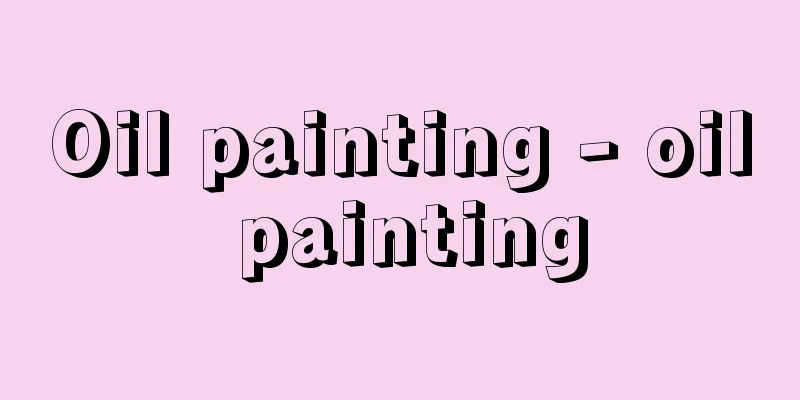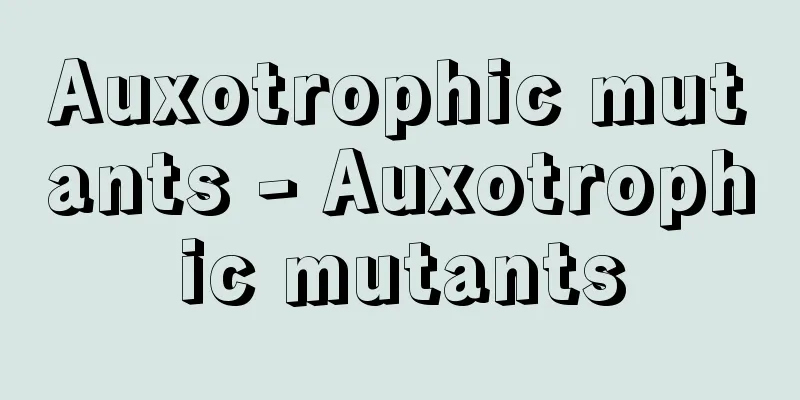Oil painting - oil painting

|
The materials, techniques and styles of oil painting vary widely depending on the era, region and school. However, in a nutshell, oil paint is paint made by mixing powdered pigments with a medium mainly made of drying oil, and painting techniques or works using this oil paint can be called oil paintings. Drying oil is a vegetable oil that, when applied in a thin layer, absorbs oxygen from the air, oxidizes, gradually loses its tackiness, dries, and turns into a flexible, transparent solid substance. The pigment mixing medium must be able to bind the pigment particles together (glue, extender) while maintaining the fluidity suitable for painting when in paint form, and form a strong layer of paint on the painting surface without changing the color. Drying oil not only meets these requirements, but it is also possible to pursue a variety of finishing effects by mixing it with natural resins and other materials. In addition, by using volatile essential oils such as turpentine or lavender as solvents, it is possible to adjust the shade of paint and the thickness of the paint layer. The most common drying oils used as mediums for oil painting are linseed oil, poppy oil, and walnut oil. In Russia, sunflower oil is said to have been used. Since the technique of using a medium mainly made of drying oil was established in Flanders in the 15th century, this oil painting technique spread throughout Europe and was the most widely used major painting technique up until the 20th century. It goes without saying that there is an extremely close and important relationship between materials, techniques, and styles in art. The history of the development of oil painting techniques cannot be considered separately from the rich achievements of the history of European painting. [Hasegawa Saburo] History of oil paintingThe origin of oil painting can be traced back to when drying oils began to be used in some form as paint materials in art and crafts. As for drying oils themselves, the 1st century Roman botanist Dioscorides already wrote about walnut oil and poppy oil, which were drying oils used as medicines. The oldest record of the use of drying oils in art and crafts is in a medical book written by the Greek physician Aetius (502-575). He wrote that walnut oil, made by "crushing or pressing walnuts...and putting them in boiling water," was used not only for medicinal purposes but also "by gilders and encaustic painters, because walnut oil dries and preserves the gold leaf and encaustic paintings for a long time." This means that drying oil was used as a protective varnish, but it also points to the origin of the technique of applying a glaze (a thin, transparent coating with a high medium content) made by mixing oil or varnish with yellow over silver or tin leaf to make it look like gold leaf or to intensify the gold color. This technique of using glazes can be found in the Middle Ages, and there are many examples in the Italian Renaissance and in 16th-century Germany. For example, Uccello's The Battle of San Romano has a red glaze over gold. It is not clear how this oil-based medium glaze came to be used in conjunction with traditional tempera techniques, that is, as a painting technique. However, the oldest examples that clearly record the use of oil-based medium as a painting material are the Treatise on Painting by the painter Eraclius from around the 10th or 11th century and the Illustrated Guide to the Arts by the monk Theophilus from around the 12th century. Ghiberti also wrote in his De Sculpture that Giotto sometimes painted with oil. The Book of Art, which is believed to have been written around 1400 by Cennini (c. 1370-c. 1440), an Italian painter from the same period as Jan van Eyck, describes how to prepare linseed oil for tempera, how to mix pigments with linseed oil, and how to finish paintings by applying oil glazes over egg tempera. Vasari writes that the technique of oil painting was invented by van Eyck. However, it should be interpreted that the technique was invented by van Eyck after many painters' repeated trial and error over several centuries, and that it was finally systematized in the 15th century by Flemish painters including the Van Eyck brothers. The establishment of oil painting techniques and their rapid spread were in line with the Renaissance's rational view of nature and its insatiable pursuit of realistic expression. The realistic depiction of three-dimensional objects and space, light and shadow, and the texture of objects, was able to make a great leap forward through oil painting techniques. [Hasegawa Saburo] Van Eyck's TechniqueA densely grained oak board is used as the base material, and the base is painted with a paint made from chalk (natural calcium carbonate) dissolved in animal glue (such as rabbit hide glue). On the smoothly polished base, the composition is sketched in detail with fine brushes using water-based paints (egg tempera). A film of drying oil is applied over the entire surface to make the base non-absorbent. Each color surface is painted with a unique color mixed with white. The amount of white is reduced and a second layer is applied using slightly more colored pigments. After going through this process, the work is finally fleshed out using varying shades of transparent paint. The work is created from light to dark areas, with layers of paint with an opaque effect being applied over layers of paint with successively more transparency. The overall thickness of the paint layers is thinner in the lighter areas and thicker in the shadow areas. The skin of the figures is painted with a pale pink or brown layer of highly transparent paint, allowing the white ground to shine through, and only a small amount of white paint is used for highlights. The paste used appears to be a mixture of drying oil and resin, but the nature of the mixture is unknown. Oil varnish made by dissolving resin in drying oil is mentioned as early as the 8th century Lucca Codex and in the writings of Theophilus. Van Eyck's hard, transparent paint layers give the impression of containing fossil resins such as copal or amber. He probably used a paste of boiled linseed oil that had been dried and mixed with hard resin. It is also unclear whether volatile essential oils were used as solvents. However, it is possible that a type of balsam was used diluted with essential oil. The surface of the finished painting is smooth, the brush strokes are almost invisible, and the subtle changes in color are expressed with a very natural gradation. By using slow-drying oil as a medium, the artist was able to take his time to carefully depict the fine details and finish the effect, achieving a realism far beyond that of egg tempera. The optical effect of the highly transparent paint layers also gives the painting a soft, deep, enamel-like glow, and has an excellent effect on the depiction of light and texture. Van Eyck's oil painting technique was so innovative and outstanding that later generations may have considered him the inventor of oil painting. [Hasegawa Saburo] Development of oil painting techniquesOil painting techniques, which developed rapidly in 15th-century Flanders, progressed relatively slowly in Italy. Vasari reports that Antonello da Messina learned oil painting techniques from van Eyck and spread them to Venetian painters, but this is not correct given the birth and death dates of both artists. However, it is certain that oil painting techniques were gradually adopted in Italy from the mid-15th century. The technical changes in the works of Giovanni Bellini, a representative Venetian painter of this period, are indicative of the situation in Italy at the time. He initially painted using pure egg tempera, but then he began to use oil glazes as well, and finally he began to paint using a technique that can be clearly called oil painting. This change coincides with the development of realistic depictions of the subtle nuances of atmosphere and light. Piero della Francesca, regardless of the era, painted in egg tempera, oil paint, or a mixture of the two. The clear atmosphere and light that permeates his paintings must have been achieved through the use of oil-based mediums. The technique of oil painting eventually reached a peak with Titian. As oil painting flourished in Venice, linen came to be used more often than wood for the substrate. The substrate had to be made of carefully selected top-quality wood, which was expensive, difficult to prepare for large paintings, and vulnerable to changes in humidity. Linen could be sewn together to make a large painting, and was cheap and easy to carry. Titian left behind a huge number of works using linen stretched over a wooden frame as the substrate. In his early works, thin layers of paint were applied over the surface, making the surface smooth, but in the 1540s, thick layers of paint (impasto) began to be used in the light areas. In his later works, he used oil paint with great freedom. He boldly sketched out compositions on thin plaster and gesso grounds, and painted with his fingers and palms as well as brushes. Indigenous colors were abandoned. The paints are either thin washes or thick impastos. Linseed oil and walnut oil are used as mediums, and transparent glazes are mixed with resin. The unrestrained paintings, which emphasize the contrast between light and dark, are almost impressionistic. Titian's technique has had a great influence on later painters. In the 17th century, three painters, Rubens of Flanders, Velázquez of Spain, and Rembrandt of the Netherlands, each perfected their own unique technique. Rubens combined the traditional Flemish technique of white ground and thin layers of paint made from linseed oil mixed with resin, which had been used since Van Eyck, with the Titian-style impasto technique. He is also said to have always used volatile essential oils. Velázquez pursued the expressive effect of impasto using light and quick brush strokes, and his technique influenced Goya in the 18th century and Manet in the 19th century. Rembrandt used a lot of so-called body color (bulky paint with a lot of body) to accentuate the unique light and dark expression of figures bathed in light against a dark background. It is no exaggeration to say that the possibilities of oil painting techniques, such as thin washes, thick impasto, transparent glazes, and body colors, were almost fully developed in the 17th century. From the 18th century to the first half of the 19th century, oil painting technique was on the road to decadence. The convenience of painting quickly, repainting, and freely adding to the original paintings took precedence, and careful consideration of materials and techniques was gradually forgotten. Boards primed with chalk or plaster were hardly used, and most artists used linen, and drying materials (ciccatives), volatile oils, lakes, and bitumen were overused. As a result, the paintings lost their transparent luster and became crusty and dull, turning black and cracking. Also, as one of the results of the Industrial Revolution, ready-made paints packed in tin tubes were produced in the 1840s. Artists were no longer required to make their own paints by hand, using the mixtures and powdered pigments of their choice in the quantities and properties they desired. In the second half of the 19th century, French impressionist painters brought about a major innovation in the history of painting. They attempted to paint realistic impressions of nature directly onto the canvas outdoors. They made extensive use of the alla prima technique, in which the final effect is achieved with the first touch. Painters produced original works using free techniques that suited their own personalities. The value of a painting came to lie in its surface, and flatness was emphasized. Impressionism was not only the ultimate outcome of the realism of European painting since the Renaissance, but it could also be said to mark the end of the history of oil painting techniques. [Hasegawa Saburo] Japanese oil paintingThe decorative paintings on the Tamamushi Zushi altar at Horyu-ji Temple, created in the mid-7th century, are said to be mitsuda-e paintings, created using perilla oil extracted from perilla seeds with mitsudaso (lead monoxide) added as a drying agent. During the Nara period, the technique of applying oil over colored paintings to harden them became popular. These can be considered a type of oil painting. However, it did not develop into a painting technique, and glue was used as a mixing material for Japanese paintings for a long time. It was not until the end of the Edo period that Western oil painting techniques were introduced to Japan. In 1856 (Ansei 3), the Edo Shogunate's Western-style school, the Bansho Shirabesho, was established, and the following year, in 1857, the Bureau of Drawings was established there and Kawakami Togai was appointed to the post. It was only after this that the study of Western paintings was officially recognized in Japan. Later, Takahashi Yuichi, who joined the Painting Department of the Bansho Shirabesho, learned oil painting from the Englishman Wirgman and exhibited two oil paintings at the 1867 (Keio 3) World's Fair in Paris. In 1876 (Meiji 9), the Kobu Bijutsu Gakko was established, and Italian painter Fontanesi and others were invited to Japan as teachers. Fontanesi stayed in Japan for about two years, but Prosperro Ferretti (1836-1893) succeeded him, followed by Acchile San Giovanni (date of birth and death unknown), who were the first to fully teach oil painting techniques. Oil paintings often attracted opposition as Western paintings (Western-style paintings, Western-style paintings) in contrast to Japanese paintings, and it took many years for them to be widely accepted by the general public. The history of oil painting in modern Japanese art clearly shows the history of the acceptance of European spiritual culture. [Saburo Hasegawa September 19, 2018] "Oil Painting Materials" by Oka Shikanosuke (1954/Revised New Edition, 1983, Bijutsu Shuppansha)" ▽ "Encyclopedia of Painting Materials" by Gettens and Stout, translated by Morita Tsuneyuki (1973/New Edition, 1999, Bijutsu Shuppansha)" ▽ "The Technique of Oil Painting" by Xavier de Langrée, translated by Kuroe Mitsuhiko, New Edition (1974, Bijutsu Shuppansha)" ▽ "The Book of Art" by C. Cennini, translated by Nakamura Tsutomu and Fujii Hisae, New Edition (1976/On-Demand Edition, 2004, Chuokoron-Bijutsu Shuppansha)" ▽ "Painting Techniques System" by Delner, translated by Sato Ichiro (1980, Bijutsu Shuppansha)" 1440-1441 Oil painting, Metropolitan Museum of Art Jan van Eyck's "The Crucifixion and the... Late 1480s Oil painting , Metropolitan Museum of Art Giovanni Bellini "Madonna and Child" 1565-1570 Oil painting, Metropolitan Museum of Art Titian: Venus and the Lute Player... 1642 Oil painting , Rijksmuseum, Amsterdam "> Rembrandt "The Night Watch" Source: Shogakukan Encyclopedia Nipponica About Encyclopedia Nipponica Information | Legend |
|
油絵の材料技法と様式には、時代や地域および流派によって実に多様な変化がみられる。しかし端的に定義すれば、乾性油を主体としたメディウムを用いて粉末顔料(がんりょう)を練り合わせた絵の具を油絵の具といい、この油絵の具を使用して描く絵画技法あるいは絵画作品を油絵(油彩画)ということができる。乾性油とは、液体の油を薄い層にして塗布した場合、空気中の酸素を吸収して酸化し、しだいに粘着性を失って乾燥し、柔軟性と透明性のある固体の物質に変化する性質をもつ植物性油である。顔料の練り合せ材(メディウム)は、絵の具の状態では描画に適した流動性を保ちつつ顔料の粒子をつなぎ合わせ(膠着(こうちゃく)材、展色材)、画面においては色彩を変化させずに強固な絵の具層を形成しなければならない。乾性油はそのような要求を満たすばかりではなく、天然樹脂などを混ぜ合わせて多様な仕上げの効果を追求することも可能であった。また、テレピンやラベンダーなどの揮発性精油を溶材(溶き油)として使用すれば、絵の具の濃淡や絵の具層の厚さの調整をすることもできる。油絵のメディウムとしてもっとも一般的な乾性油は、あまに油(リンシード・オイル)、けし油(ポピー・オイル)、くるみ油である。ロシアではひまわり油が用いられたといわれる。15世紀のフランドルにおいて乾性油を主体にしたメディウムを用いる技法が確立されて以来、この油絵技法はヨーロッパ各地に広まり、20世紀に至るまで主要な絵画技法としてもっとも広く使用されてきた。美術の材料技法と様式にはきわめて密接で重要な関係があることはいうまでもない。油絵技法の発展の歴史は、ヨーロッパ絵画史の豊かな成果と切り離して考えることはできない。 [長谷川三郎] 油絵の歴史油絵の起源は、乾性油が美術工芸品になんらかの形で塗料の材料に使用され始めたときにさかのぼることができる。乾性油そのものについていえば、1世紀のローマの植物学者ディオスコリデスがすでにくるみ油とけし油について記しているが、これは医薬品としての乾性油である。美術工芸品に乾性油が使用されたことを記しているもっとも古い例は、ギリシア人の医者アエティウス(502―575)の著した医学書である。彼は、「クルミの実を突き砕くか圧搾し……熱湯に入れて」つくったくるみ油が、医薬用のほかに「金箔(きんぱく)職人やエンカウスティック画家に使用された。くるみ油は乾燥し、金箔やエンカウスティック画を長期間にわたって保護するからである」と述べている。これは、乾性油が保護膜のワニスとして使用されていたことを意味しているが、油やワニスに黄色を混ぜたグレーズ(メディウムの多い薄く透明な被膜)を、銀箔や錫(すず)箔の上にかけて金箔のように見せかけたり、金箔の上にかけて金の色を強めたりする技法の起源を示している。このようなグレーズを用いる技法は中世にも例があり、イタリア・ルネサンス期や16世紀ドイツにも多くの例がみられる。たとえばウッチェロの『サン・ロマーノの合戦』では、金の上に赤のグレーズがかけられている。この油性メディウムによるグレーズが、どのようにして伝統的なテンペラ技法と併用されるようになったか、つまり絵画技法の一つとして使用されるようになったかは明らかではない。しかし、油性メディウムをはっきりと絵画材料として使用することを記しているもっとも古い例としては、10~11世紀ごろの画家エラクリウスの画論や12世紀ごろの修道士テオフィルスの『諸芸提要』などがある。またギベルティはその著『彫刻論』のなかで、ジョットがときによって油で描いたと記している。フランドルのヤン・ファン・アイクと同時代のイタリアの画家チェンニーニ(1370ころ―1440ころ)が1400年ごろに著したと推定される『芸術の書』には、テンペラ用のあまに油の調製法、顔料をあまに油で練り合わせる方法、そして卵テンペラの上に油性グレーズをかけて絵を仕上げる方法などが記述されている。バザーリは、油絵の技法はファン・アイクによって発明されたと記している。しかし、実際には数世紀にわたる長い間、多くの画家たちの試行錯誤が繰り返され、ついに15世紀に至ってファン・アイク兄弟をはじめとするフランドルの画家たちによって油絵技法が体系化されたと解釈すべきである。油絵技法の確立とその急速な伝播(でんぱ)はルネサンスの合理的な自然観、飽くなき写実表現の追求と軌を一にしている。三次元の立体と空間、光と影、物の質感などの迫真的な描写は、油絵技法によって飛躍的な発展を遂げることができたのである。 [長谷川三郎] ファン・アイクの技法緻密(ちみつ)な木目の樫(かし)の板を基底材とし、白亜(チョーク。天然の炭酸カルシウム)を動物性の膠(にかわ)(ウサギなどの皮膠)で溶いた塗料で地塗りをする。滑らかに磨いた地の上に、水性絵の具(卵テンペラ)を用いて細筆で精細に構図を素描する。乾性油の塗膜を全面に施し、地を非吸収性にする。白を混ぜた固有色で各色面を塗る。白の量を減らし、やや有色顔料を多くして第2層を塗る。このような過程を経て、最終的には透明な絵の具の濃淡を変えながら肉づけをする。制作は明部から暗部へと進められ、絵の具は不透明な効果をもつ絵の具層の上に順次透明度を高めた絵の具層が塗り重ねられる。絵の具層全体の厚さは明るい部分ほど薄く、影の部分は厚い。人物の肌の部分では、薄いピンクや茶色の透明度の高い絵の具層を通して白く輝く地が透けて見える効果を利用し、白色絵の具はハイライトにわずかに使用されるだけである。練り合せ材は乾性油に樹脂を混ぜたものが使用されているようであるが、材質は解明されていない。乾性油に樹脂を溶かしてつくる油性ワニスについては、古くは8世紀のルッカ写本、またテオフィルスの著書にも記されている。ファン・アイクの硬質で透明な絵の具層は、コーパルやこはくのような化石樹脂が含まれているような印象を与える。おそらく彼は、煮立てて乾性化したあまに油に硬質樹脂を混ぜた練り合せ材を使ったのであろう。また溶材として揮発性精油が使用されたかどうかも明らかではない。しかし、バルサムの一種を精油で伸ばして使ったのかもしれない。完成された絵の表面は滑らかで、筆のタッチはほとんど見えず、微妙な色調の変化はきわめて自然な諧調(かいちょう)で表現されている。緩やかに乾く乾性油をメディウムに用いることによって、画家は細部の精細な描写と仕上げの効果のために落ち着いて時間をかけることができ、卵テンペラによる描写をはるかに越えた写実表現を達成することができた。また透明度の高い絵の具層の光学的効果は、画面に柔らかで深みのあるエマイユのような輝きを与え、光と質感の表現に優れた効果を及ぼしている。ファン・アイクの油彩技法はあまりにも革新的で卓越していたため、後世の人々は、彼を油絵の発明者とみなしたのであろう。 [長谷川三郎] 油絵技法の発展15世紀フランドルにおいて急速に発展した油絵技法は、イタリアにおいては比較的緩やかに進歩した。バザーリは、アントネッロ・ダ・メッシーナがファン・アイクから油絵技法を学び、これをベネチアの画家たちに広めたと伝えているが、これは両者の生没年からみて正しいとはいえない。しかし、イタリアでは15世紀中葉からしだいに油絵の技法が採用されるようになったことは確かである。この時代のベネチア派の代表的な画家であるジョバンニ・ベッリーニの作品の技法的な変化は、当時のイタリアの状況をよく示している。彼は初期においては純粋な卵テンペラ技法で描いていたが、やがて油性グレーズを併用するようになり、ついには、はっきりと油絵とよぶことのできる技法で描くようになった。それは、大気と光の微妙なニュアンスの写実的描写の発展と一致する変化である。またピエロ・デッラ・フランチェスカは、年代にはあまり関係なく、卵テンペラでも油絵でも描き、また両者の混合技法でも描いている。彼の画面に浸透している澄明な大気と光は、油性メディウムの使用によって実現されたに相違ない。 油絵の技法は、やがてティツィアーノによって一つの頂点に達する。ベネチアで油絵が隆盛するにつれて、基底材にも板より麻布が多く使用されるようになった。基底材としての板は、よく吟味された最上質の材でつくられねばならず、高価で、大画面のための板を用意するのは容易ではなく、湿度の変化に対して弱い。麻布は、はぎ合わせて大きくすることもでき、安価で持ち運びにも便利であった。ティツィアーノは、木枠に張った麻布を基底材に用いて、膨大な数の作品を残した。彼の初期の作品では、薄い絵の具層が塗り重ねられ、表面は滑らかであったが、1540年代になると、明部に厚く盛り上げた絵の具(インパスト)がみられるようになる。後期の作品では、彼は実に自由自在に油絵の具を駆使している。彼は、薄い石膏(せっこう)と膠の地(ジェッソ)の上に大胆に構図を粗描し、筆だけではなく指やたなごころを使って描いた。固有色は放棄されている。絵の具は薄いウォッシュもあれば厚いインパストもある。メディウムにはあまに油とくるみ油が使われ、透明なグレーズには樹脂が混ぜられている。明暗の対比を強調した奔放な画面は、ほとんど印象主義的でさえある。ティツィアーノの技法は、後の画家たちに多大の影響を及ぼしている。 17世紀にはフランドルのルーベンス、スペインのベラスケス、オランダのレンブラントの3人によって、それぞれ独特の技法が完成された。ルーベンスは、白い地塗りと、樹脂を混ぜたあまに油を使用した薄塗りの絵の具というファン・アイク以来の伝統的なフランドルの技法に、ティツィアーノ風のインパストの技法を結合させた。また彼は揮発性精油をいつも使用していたと伝えられる。ベラスケスは、軽やかですばやい筆のタッチによるインパストの表現効果を追求し、その技法は18世紀のゴヤをはじめ、19世紀のマネにまで影響を与えている。レンブラントは、いわゆるボディ・カラー(体質を多く含んだ、かさのある絵の具)を多く用い、暗い背景のなかから光を浴びた人物が浮かび上がる独特の明暗表現にアクセントを与えた。17世紀に、薄いウォッシュや厚いインパスト、透明なグレーズやボディ・カラーなど、油絵技法の可能性はほとんど開発されてしまったといっても過言ではない。 18世紀から19世紀の前半に至る時代、油絵は技法的には退廃への道を進んでしまったといえよう。手早く描き上げたり、描き直したり、自由に加筆したりする制作上の便利さが優先し、材料や技法に対する細心な配慮がしだいに忘れられていった。白亜や石膏の地塗りをした板はほとんど顧みられず、大半の画家が亜麻布を使用し、乾燥材(シッカティフ)や揮発性精油、レーキやビテュームが乱用された。その結果、画面は透明な輝きを失い、かさかさした鈍い絵の具層になり、黒く変質したり亀裂(きれつ)を生じたりした。また産業革命の成果の一つとして、1840年代には錫のチューブに詰めた既製絵の具が生産されるようになった。画家たちは、もはや、好みの分量と性質の練り合せ材と粉末顔料を用いて独自の絵の具をつくる職人的な手仕事からも解放されてしまった。 19世紀後半、フランスの印象派の画家たちは絵画史に大きな革新をもたらした。彼らは、戸外で自然の印象を直接画面に写生しようとした。最終的な効果を、最初のタッチで描き上げてしまうアッラ・プリーマの描法が多用されるようになった。画家たちは、それぞれの個性に応じた自由な描法で独創的な作品を生み出した。絵画の価値は、その表面にこそ存在することになり、平面性が強調された。印象主義は、ルネサンス以来のヨーロッパ絵画の写実主義が到達した帰結であるばかりではなく、油絵技法の歴史の終末をも意味しているといえよう。 [長谷川三郎] 日本の油絵7世紀中葉に制作された法隆寺の玉虫厨子(ずし)の装飾画は、エゴマからとった荏油(えのあぶら)に密陀僧(みつだそう)(一酸化鉛)を乾燥剤として加えた展色材を使って描いた密陀絵であるといわれる。また奈良時代には、彩絵の上に油を塗って絵の具を固める油色(ゆしょく)の技法が盛行した。これらは一種の油絵ということもできる。しかし絵画技法として発展することはなく、日本の絵画の練り合せ材には長い間、膠が使用されてきた。西洋の油絵の技法が日本に伝えられたのは幕末になってからである。1856年(安政3)江戸幕府の洋学校である蕃書調所(ばんしょしらべしょ)が設立され、翌1857年、同所に絵図調方が設けられて川上冬崖(かわかみとうがい)が着任して以後、ようやく日本で洋画の研究が公認された。その後、蕃書調所画学局に入った高橋由一(たかはしゆいち)が、イギリス人ワーグマンに油絵を学び、1867年(慶応3)のパリの万国博覧会に2点の油絵を出品した。やがて1876年(明治9)工部美術学校が設立され、イタリアから画家フォンタネージらが教師として招かれて来日した。フォンタネージの在日は2年ほどであったが後任としてフェレッチProsperro Ferretti(1836―1893)、ついでサン・ジョバンニAcchile San Giovanni(生没年不詳)らが来日、彼らによって油絵技法の教育が初めて本格的に行われた。油絵は、日本画に対する洋画(洋式の絵画、洋風画)として反感を買うことが多く、一般に広く認められるまでには年月を要した。日本の近代美術における油絵の歴史はヨーロッパ精神文化受容の歴史を如実に示している。 [長谷川三郎 2018年9月19日] 『岡鹿之助著『油絵のマティエール』(1954/改訂新版・1983・美術出版社)』▽『ゲッテンス、スタウト著、森田恒之訳『絵画材料事典』(1973/新装版・1999・美術出版社)』▽『グザヴィエ・ド・ラングレ著、黒江光彦訳『油彩画の技術』増補新版(1974・美術出版社)』▽『C・チェンニーニ著、中村彝・藤井久栄訳『芸術の書』新装版(1976/オンデマンド版・2004・中央公論美術出版)』▽『デルナー著、佐藤一郎訳『絵画技術体系』(1980・美術出版社)』 1440~1441年ころ 油彩メトロポリタン美術館所蔵"> ヤン・ファン・アイク『キリストの磔刑と… 1480年代後期 油彩メトロポリタン美術館所蔵"> ジョバンニ・ベッリーニ『聖母子』 1565~1570年ころ 油彩メトロポリタン美術館所蔵"> ティツィアーノ『ビーナスとリュート奏者… 1642年 油彩アムステルダム国立美術館所蔵"> レンブラント『夜警』 出典 小学館 日本大百科全書(ニッポニカ)日本大百科全書(ニッポニカ)について 情報 | 凡例 |
Recommend
Izumo Province
The old name of the eastern half of Shimane Prefe...
Waste paper purchase
… In the early modern period, waste paper dealers...
Nabonidos
The last king of the Neo-Babylonian Empire (reigne...
Peristalsis
… Digestive tract motility can be broadly divided...
constraining force
...In the above example, it is possible for the o...
fondue bourguignonne (English notation) fonduebourguignonne
...500cc of dry white wine is added and heated, 6...
Acrocephalus
...A general term for birds of the Acrocephalus g...
Fernand Braudel
French historian. Born in the small village of Lu...
Ibuki
The former name of a town (Ibuki-cho) in Sakata C...
Bowen, Norman L.
Born June 21, 1887 in Kingston, Canada Died: Septe...
Kokinbaizasa - Kokinbaizasa
A perennial plant of the family Albizia (illustrat...
Torahiko Terada
Physicist and essayist. He achieved great success...
《M》 - M
…Born in Vienna. He studied architecture and art,...
Fremdenverkehr
…The word tourism began to be used in the UK at t...
Inspector - Kangun
〘 noun 〙 The act of supervising the military. Also...




![Yura [town] - Yura](/upload/images/67cd1568c9146.webp)




